*This post may contain affiliate links. Read more »
Kisir is a flavorful bulgur salad and probably the most recognized Turkish side dish worldwide. Imagine a generous mound of bulgur, expertly mingled with the deep, rich essence of tatli biber salçası, Turkish pepper paste. It’s got all the good things: herbs, veggies, and a generous drizzle of dark pomegranate molasses.


Enter your email & I'll send it to your inbox. Plus, get great new recipes from me every week!
By submitting this form, you consent to receive emails from Cinnamon Snail.
Although made with cracked wheat, it is super different from tabouli, which is wayyyyy heavier on parsley, and is also quite different from bulgur pilavi, which is more often eaten hot and rarely has the nuts and pomegranate seeds that kisir is famous for. It makes a great bed for serving grilled foods on, and your favorite Turkish dishes like Zeytinyağlı Taze Fasulye, Barbunya Pilaki, and Mercimek Koftesi.
If you have not made kisir before, don’t worry, I’ve got you! In addition to a clear step-by-step guide with photos, I have included helpful info and answers to your questions in this post with no fluff or stories about my grandma (though I bet you would love her too!).
Your kitchen is about to transform into a Turkish culinary haven. Shall we begin?
Jump to:
🥰Why you'll adore this Turkish bulgur recipe
✊ Vegan AF: This bulgur salad is 100% plant-based. Like all of my recipes, it contains no cholesterol and avoids causing harm to animals and the environment.
🙅♀️🌾 Easily make it gluten-free: All you have to do to make this gluten-free is to substitute the bulgur for cooked quinoa or millet, and you can still get wild at the kisir party!
🌟 Flavorful Bulgur Magic: Turkish bulgur wheat soaks up the essence of Turkish pepper paste and pomegranate molasses, infusing every bite with bold, chewy authentic flavor.
🥸 Foolproof Heat Control: No real cooking is needed in this recipe! The bulgur just gets rehydrated in a bowl with boiling water. This makes a quick alternative to Turkish rice. No chance you can overcook it, or mess it up, even if you suck at cooking!
✅Tested and Approved Worldwide: Like all of my Turkish recipes, I have dialed this Kisir recipe in with constant tweaking, and then it has been tested in kitchens all around the globe by a large group of recipe testers I work with. My testers loved it, finding success with varying ingredient brands available worldwide.


Transform Your cooking with Turkish Vegan Magic
This 6-day program is 100% FREE. Get Ready to Master Turkish Vegan Cuisine!
🌾Notable ingredients and substitutions
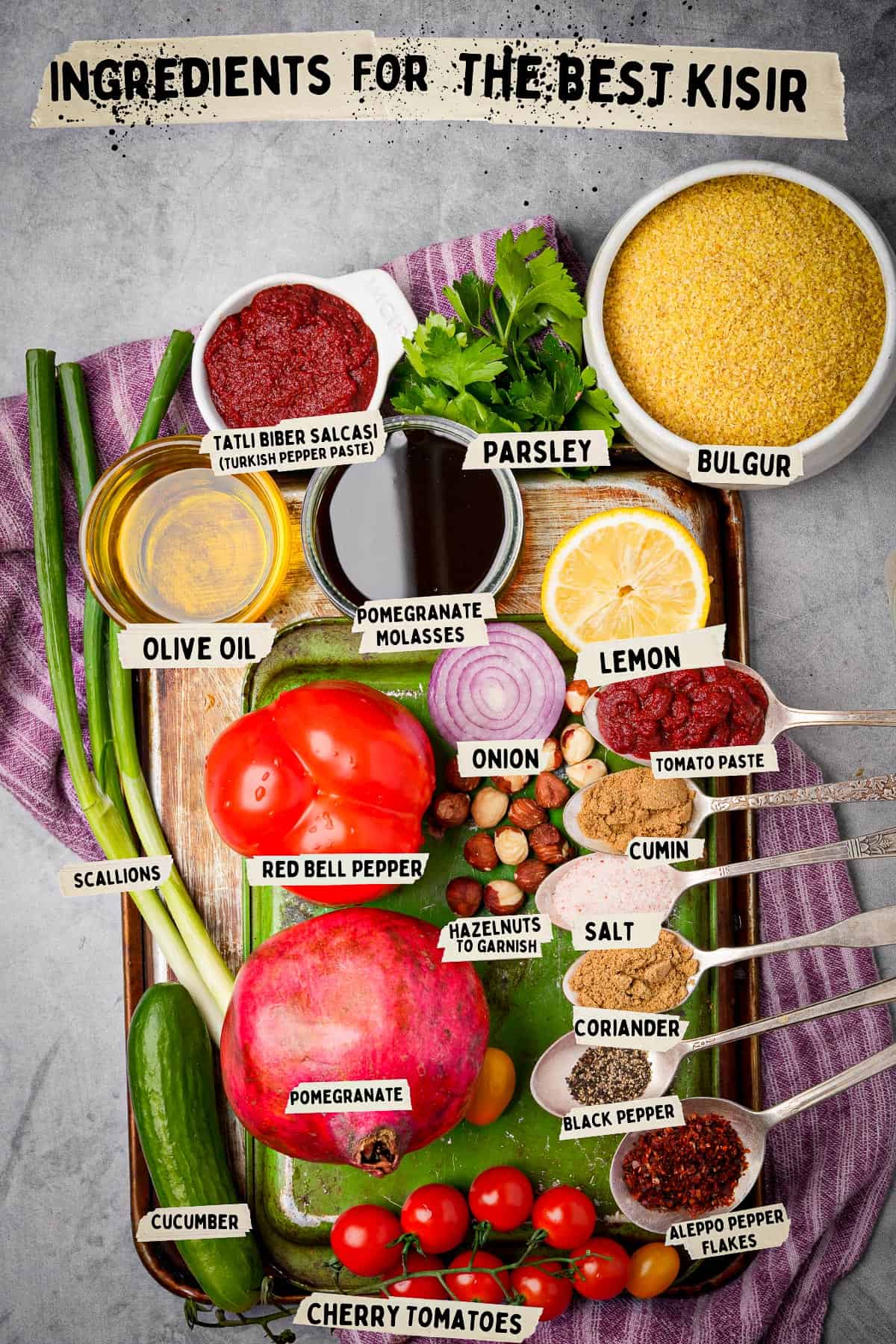
Hazelnuts
A bunch of people make kisir without nuts, but to me that’s like making PB&J without bread… Originating from the Black Sea region of Turkey, hazelnuts add a delightful crunch to Kisir. Toasted walnuts are also a common variation. If you have a nut allergy, consider substituting with toasted sunflower seeds or pine nuts.
Spring Onions
Known as "yeşil soğan" in Turkey, these are a must in kisir for their mild, onion-like flavor and bright green color. If you're out of scallions, chives or finely minced red onions can work as a substitute.
Bulgur
A staple in Middle Eastern and Mediterranean cuisine, cracked wheat is the heart of this dish. It’s used a LOT in Turkish cuisine in koftesi, such cig kofte. Don't use the super coarse stuff for this recipe -save that for dishes like Indian Daliya instead, ya big goof. I'd say this wouldn't be a bulgur wheat salad without bulgur, but if you need an alternative, pre-cooked quinoa or couscous can still make a killer kisir.
Tatli Biber Salçası
This Turkish pepper paste adds a sweet and slightly spicy kick to Kisir. If you want a spicier kick, use aci biber salcasi instead. In my opinion, it is absolutely essential in Turkish tomato sauces like you would use on fellah koftesi and Şakşuka. If you can't find it though, you can use tomato paste with a pinch of added sweetener in its place.
Aleppo pepper Flakes
Also sometimes called Pul Biber in Turkey, these pepper flakes provide floral, not-overbearing heat. They do not contain seeds and are milder than crushed red pepper flakes. They are perfect for dishes like Soslu Patlcan Yemegi or to sprinkle over a plate of labneh!
Pomegranate Molasses
Known as "nar ekşisi" in Turkey, pomegranate molasses brings a delightful tangy sweetness to Kisir. I use it in everything from lemonade (try it, trust me) to ezme in my seasonal vegan Middle Eastern-themed pop-up in New Jersey. You can create a substitute by replacing pomegranate juice with a dash of regular molasses.
Pomegranate Seeds
These ruby-red jewels, often referred to as "nar taneleri" in Turkey, add bursts of juicy freshness to Kisir. If you have trouble getting them out of the fruit, please check out my Shakarkandi Ki Chaat recipe that shows a step-by-step hack for easily removing the seeds without wasting any. If pomegranate seeds are out of season and not available frozen, consider using dried cranberries or dried barberries for a similar vibe.
*See the recipe card at the bottom of the page for exact quantities, nutritional info, and detailed cooking directions.
🤯Variations
Kisir with Walnuts
In some regions of Turkey, particularly in the Antakya area, chopped toasted walnuts are used as a flavorful alternative to hazelnuts. They provide a rich, earthy taste and a delightful textural contrast to the dish. Simply substitute the hazelnuts with an equal amount of toasted walnuts if you want to take this variation for a spin.
Kisir with Sumac
Sumac, a tangy and slightly citrusy spice, is used in some variations of Kisir. It replaces the lemon juice, adding a distinctive tartness to the dish. To make this version, omit the lemon juice and sprinkle sumac generously over the finished Kisir.
📖 How to make perfect Kisir
Nail this on your first shot by following these step-by-step instructions with important tips. Or you can follow along with the easy-to-print recipe card towards the bottom of this page.
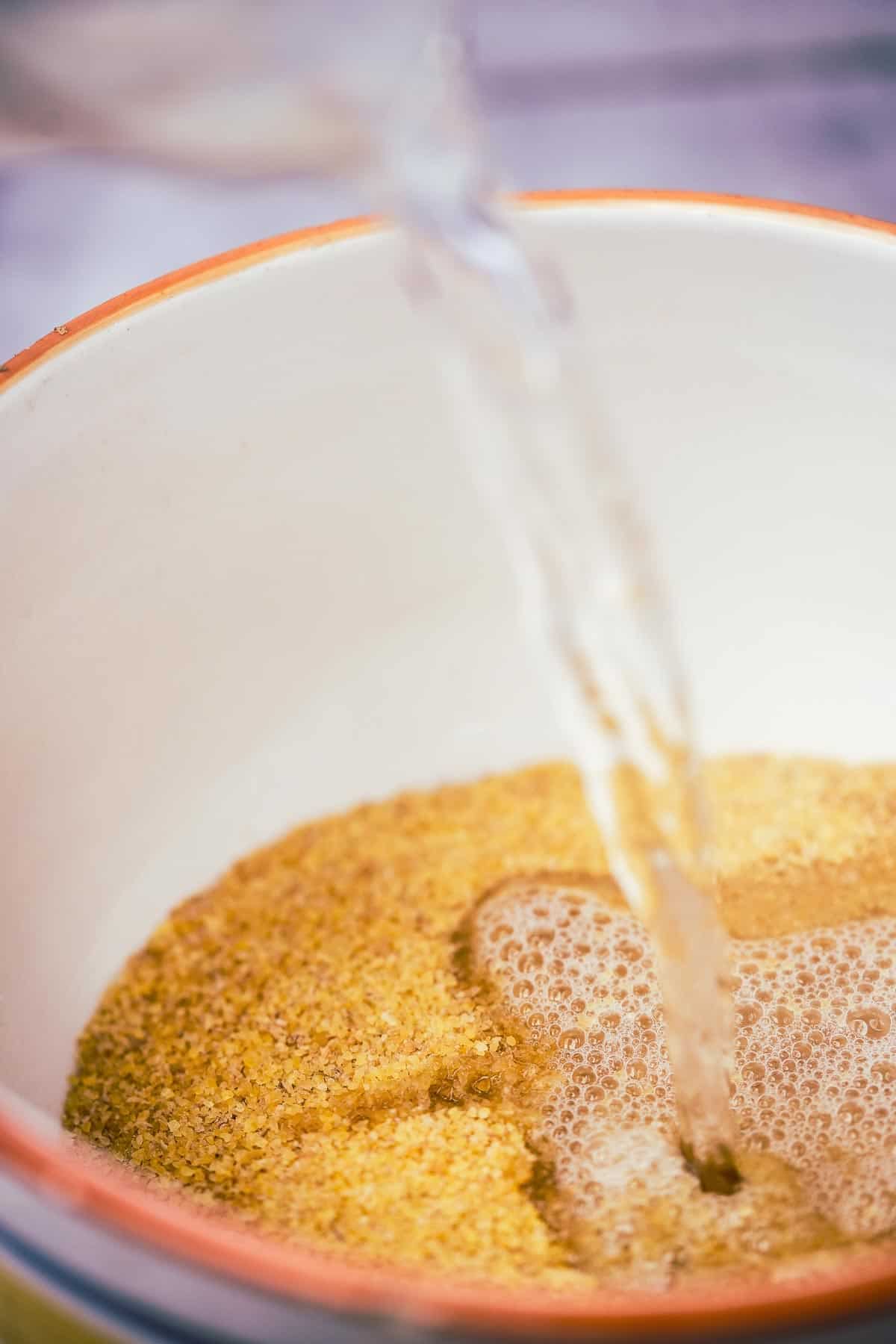
Step One
Bulgur Soak:
Start by giving the bulgur a good rinse in a very fine mesh strainer, then let it soak in boiling water for 15-20 minutes, covering the bowl with a plate or kitchen towel.
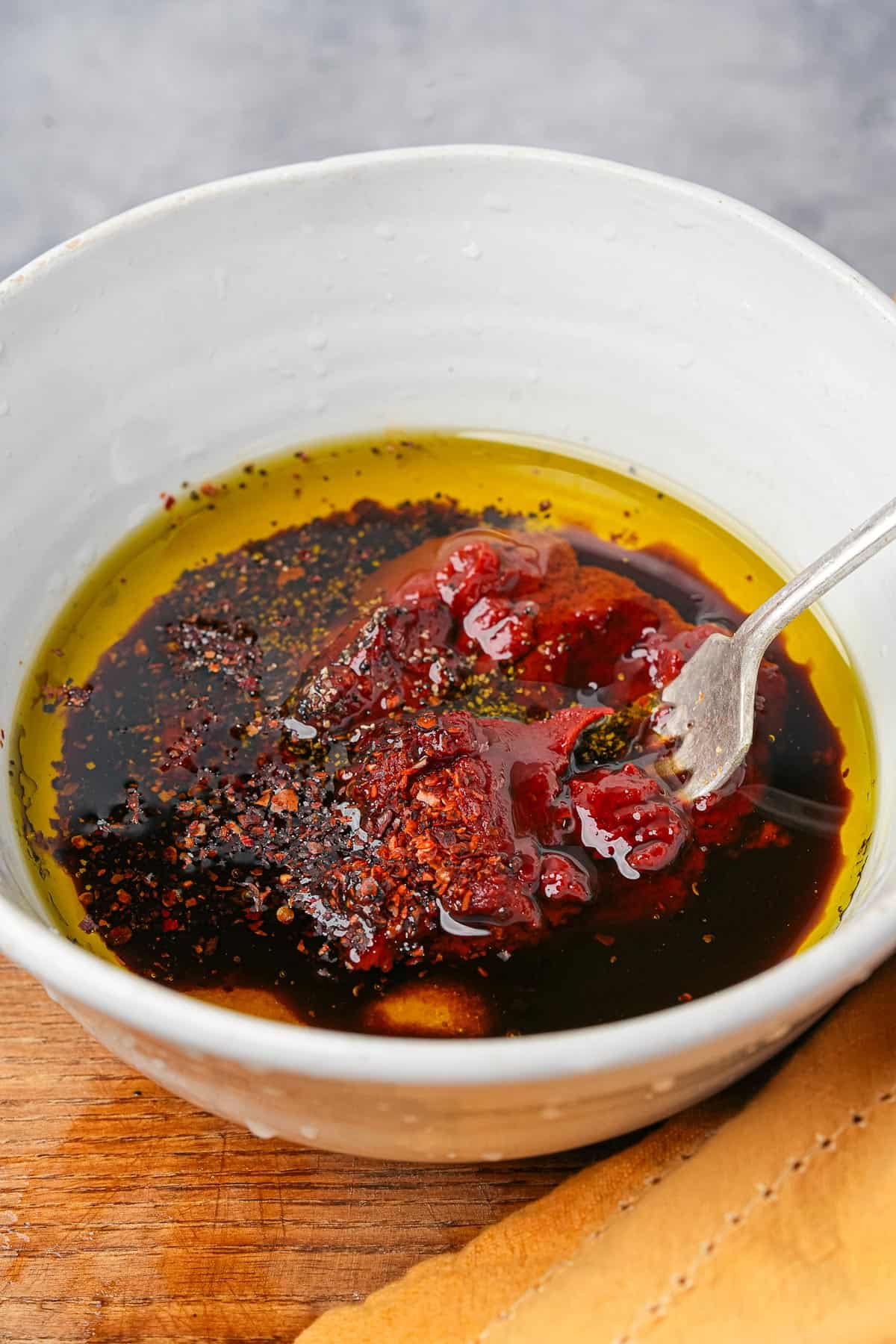
Step Two
Flavorful Paste:
In a separate bowl, create a smooth paste by mixing Turkish pepper paste, tomato paste, Aleppo pepper flakes, black pepper, salt, lemon juice, pomegranate molasses and olive oil with the tines of a fork.
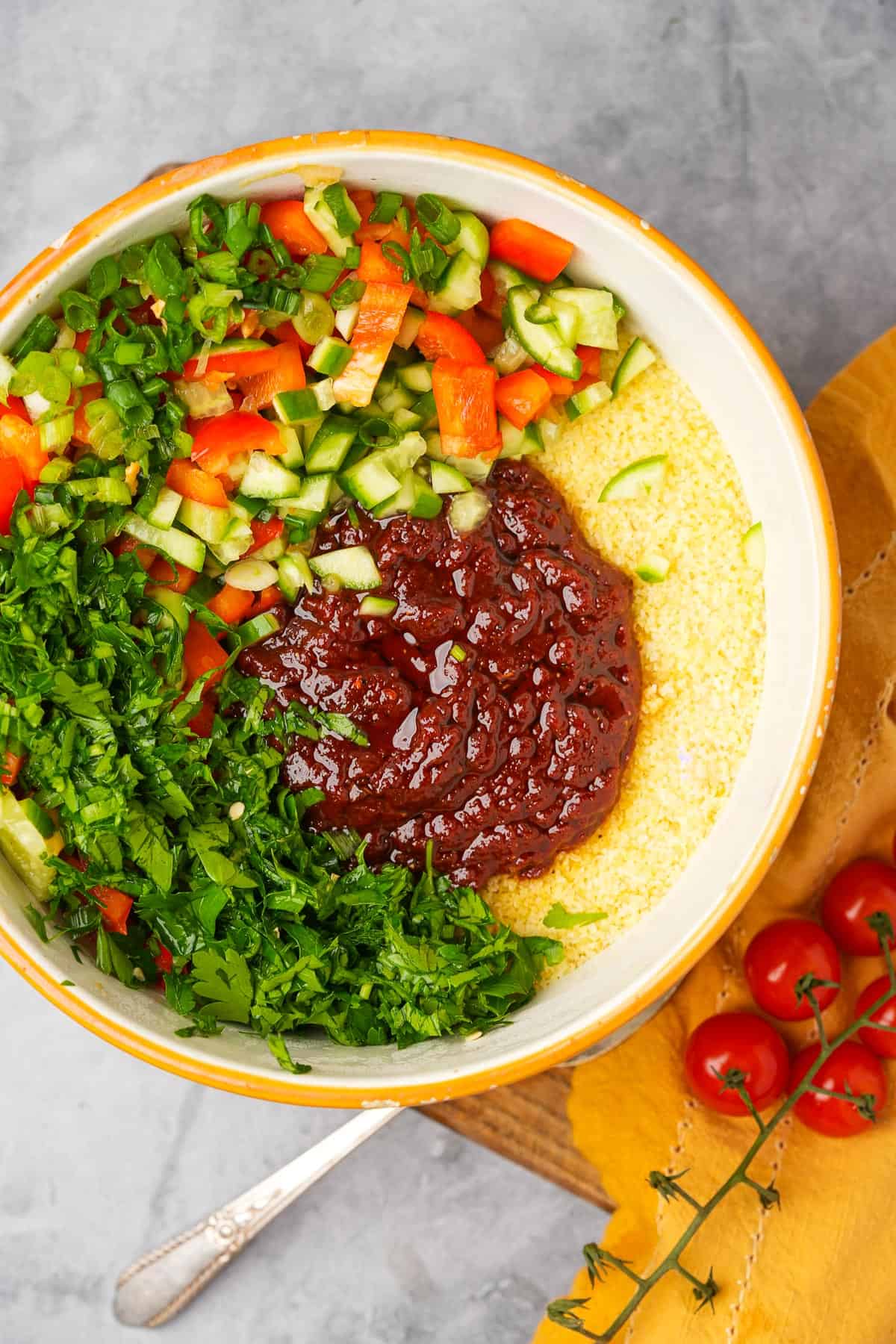
Step Three
Spice and Freshness:
Add the prepared paste, along with diced cucumber, chopped scallions, red bell pepper, flat-leaf parsley, cumin, and coriander to the bulgur. Fluff it all up with a fork.

Step Four
Vibrant Garnish:
Place the kisir in an attractive serving dish, or into lettuce leaves on a platter, and garnish it with toasted hazelnuts, thinly sliced scallion, pomegranate seeds, halved cherry tomatoes, and optionally some thinly sliced red onion.
💡Serving Ideas
Serve this Turkish bulgur salad as part of a nourishing Turkish feast!
Because beans and grains combine to provide nourishing plant-based protein, pair it with traditional Turkish borlotti beans, Turkish-style runner beans, or Moroccan stewed white beans. It’s also great with a cup of warm ezogelin, or Harira, containing lentils, chickpeas, and thin vermicelli noodles.
EVERYTHING is better with more veggies like this Turkish olive oil braised celery root, or roasted eggplant.
If you want to include it as part of a more Middle Eastern themed meal, it goes great alongside baharat-roasted oyster mushroom Shawarma or Vegan Kofta (made out of homemade seitan), drizzled with tahini and shatta sauce. The bold, savory notes of these dishes complement the refreshing Kisir flavors.
To end your feast on a sweet note, indulge in classic Turkish desserts like irmik helvasi or pistachio baklava.
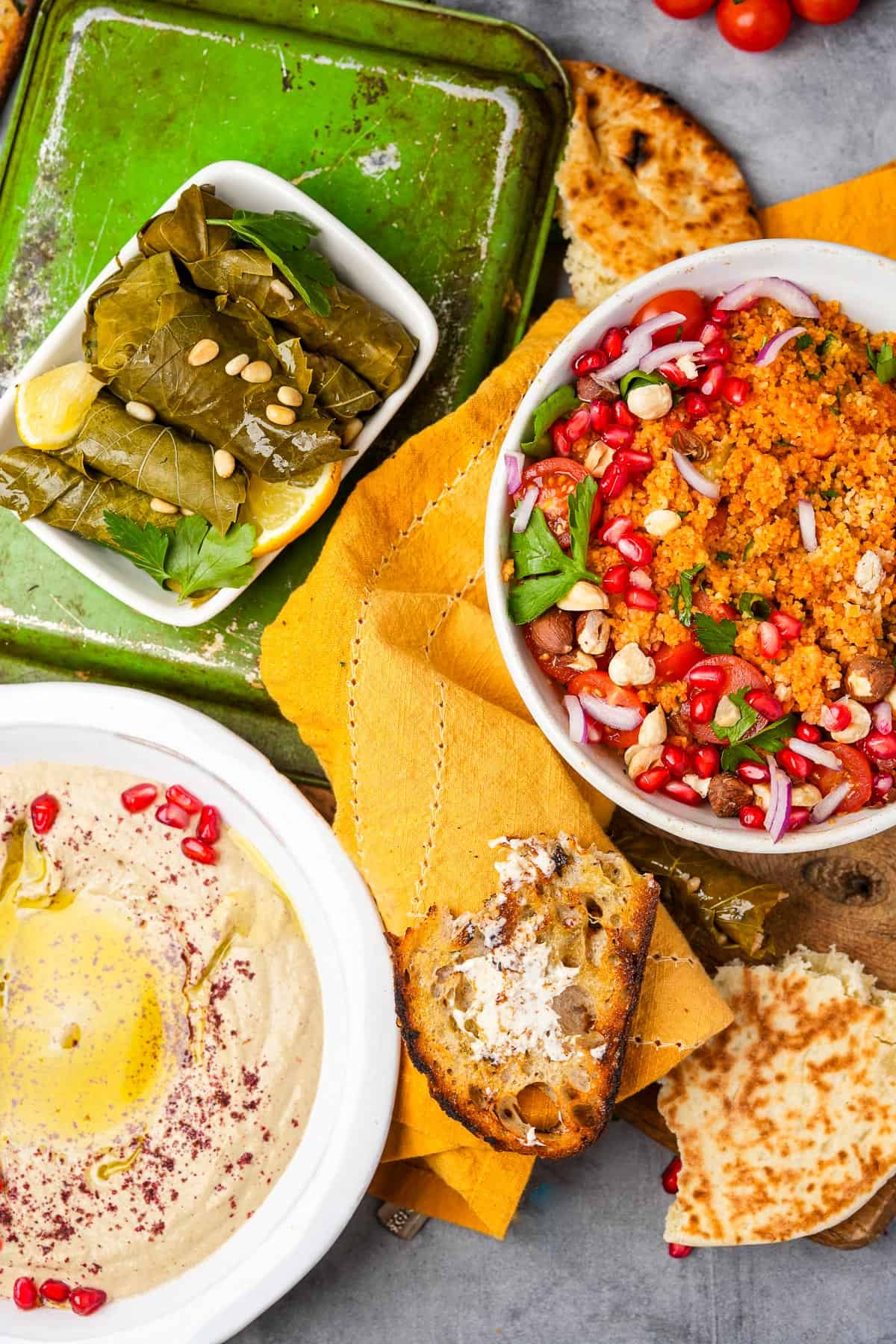
👉Top tips
- Proper Bulgur Soaking: Ensure you soak the bulgur in boiling water for the right amount of time. You basically can’t over-soak it as long as you don’t use more water than this recipe calls for, but make sure it has sat covered for 20 minutes to absorb the water. A kitchen towel or plate covering the bowl helps with the absorption process.
- Balancing Flavors: Pay close attention to the balance of flavors. The combination of Turkish pepper paste, tomato paste, and pomegranate molasses should be harmonious, with neither overpowering the other. If you want it spicier, go with a little more Aleppo pepper flakes, or use aci biber salcasi instead of the tatli biber salcasi. Taste as you go and adjust to your preference.
- Don’t forget to garnish! Use the garnishes I mention in this recipe, or use micro-greens, fresh mint leaves, or fried shallots as you please. Garnishes make a huge difference in the presentation of the salad!
🤷♀️FAQ
Store any remaining Kisir in an airtight container in the refrigerator. It will stay fresh for up to 3 days. Make sure to fluff it back up with a fork, and add fresh garnishes when serving kisir, which has been sitting, to bring it back to life.
Absolutely! Kisir is a great make-ahead dish. Prepare it a few hours or even a day in advance, allowing the flavors to mingle, making it even more delicious.
Yes, you can substitute bulgur with cooked quinoa or cooked rice for a gluten-free version of Kisir, and it'll still be delicious.
Certainly! The level of spiciness depends on the amount and kind of Turkish pepper paste you use. Aci biber salcasi is spicier, and tatli biber salcasi is milder. You can also increase or decrease the Aleppo pepper flakes to suit your heat preference.
Kisir is a traditional Turkish dish that hails from the southeastern region of Turkey, particularly Gaziantep. The name "Kisir" is derived from a Turkish word meaning "well-seasoned." This vibrant salad is enjoyed in Turkey and various Middle Eastern countries, and it has evolved over the years to suit different regional preferences.
✌️My faves to serve with this dish:
Say Hi on Social! 👋
Follow me on Instagram & Facebook for more recipes.
❤️Love this recipe? It helps me out greatly if you leave a 5-star 🌟🌟🌟🌟🌟rating in the recipe card below and maybe even leave me a lovey-dovey comment too!

Kisir (Spicy Turkish vegan bulgur salad)
Equipment
- Fine-mesh strainer
Ingredients
- 2 cups fine bulgur
- 3 cups
boiling water
- ¼ cup tatli biber salçası (Turkish pepper paste)
- 2 tablespoons tomato paste
- 2 teaspoons Aleppo pepper flakes
- ¼ teaspoon ground black pepper
- 1 teaspoon salt or to taste
- ⅓ cup extra virgin olive oil
- 3 tablespoons
lemon juice
- 3 tablespoons pomegranate molasses
- 1 cup cucumber diced
- 2 scallions sliced
- 1 small red bell pepper
diced, seeds discarded
- ½ cup flat-leaf parsley chopped
- ½ teaspoon cumin
- ½ teaspoon coriander
To garnish:
- ½ cup hazelnuts toasted, roughly chopped
- 1 scallion (spring onion), thinly sliced
- ¼ cup pomegranate seeds
- ¼ cup cherry tomatoes halved
- Fresh parsley leaves optional
- Thinly sliced red onion optional
Instructions
- Rinse the fine bulgur and let it soak in boiling water for 15-20 minutes with a plate covering the bowl.
- In a separate bowl, combine Turkish pepper paste, tomato paste, Aleppo pepper flakes, black pepper, salt, olive oil, lemon juice, and pomegranate molasses to form a smooth paste.
- Mix in the paste along with the diced cucumber, chopped scallions, red bell pepper, flat-leaf parsley, cumin, and coriander to the bulgur.
- Garnish with toasted hazelnuts, thinly sliced scallion, pomegranate seeds, halved cherry tomatoes, and optional parsley and red onions.
Notes

Enter your email & I'll send it to your inbox. Plus, get great new recipes from me every week!
By submitting this form, you consent to receive emails from Cinnamon Snail.


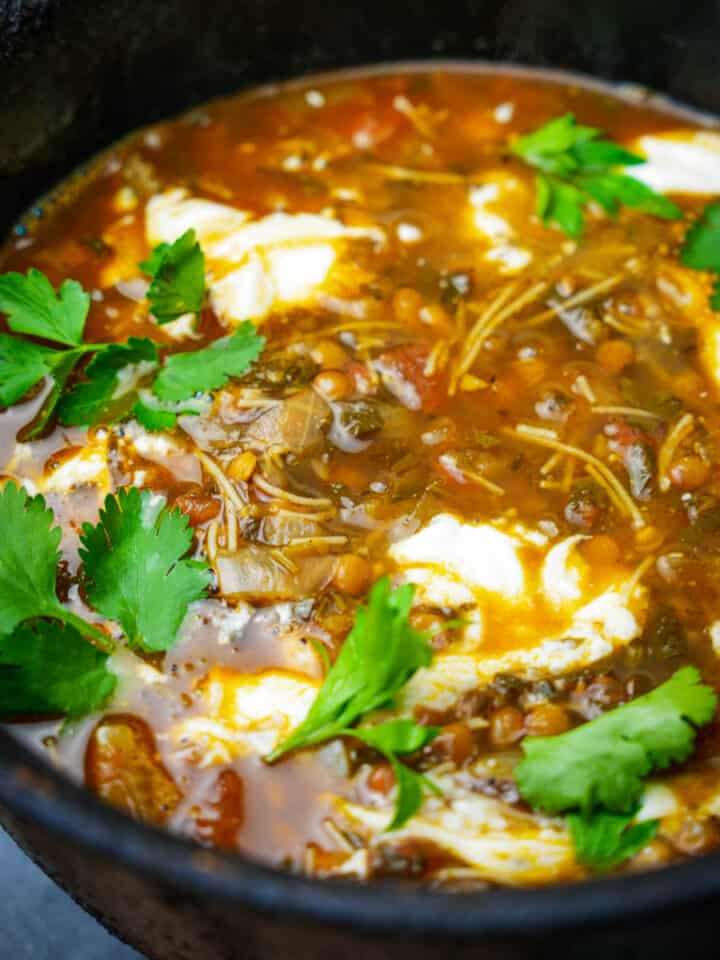

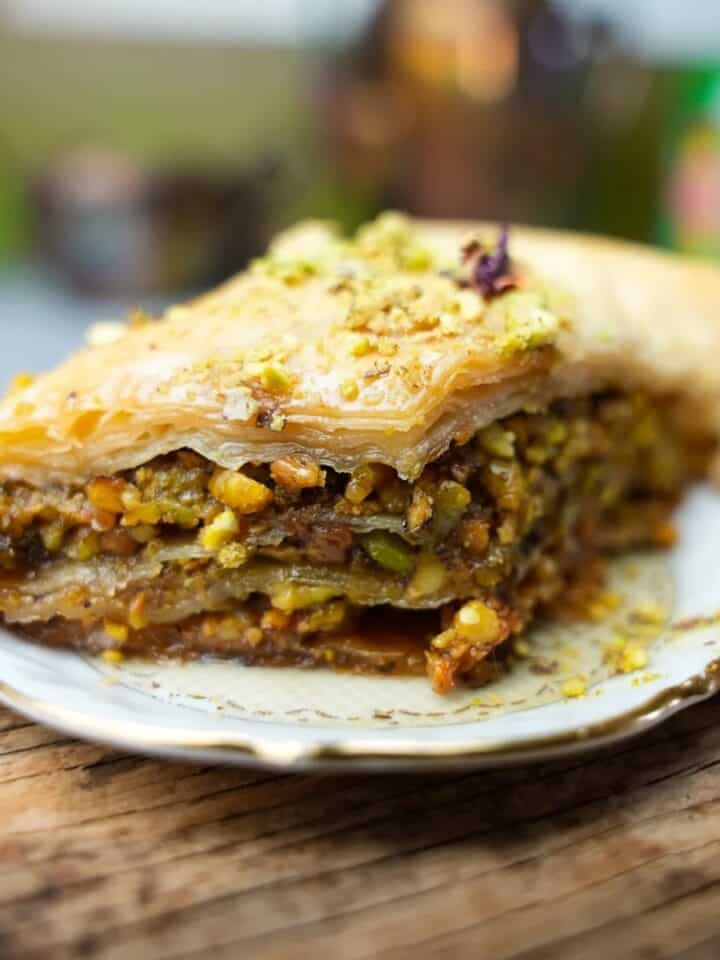






hg says
Recipe with authentic Turkish flavors that comes together quickly, with minimum effort. I've made this dish many times as a side dish, and just to snack on,